India is a country that defies simple descriptions. It’s vast, diverse, and full of contrasts, from sun-kissed beaches to snow-capped mountains. Every region feels like stepping into a new world.
I’ve visited India four times and explored much of the country. Here, I’ve put together some of the best places to visit in India.
Whether you’re planning your first trip or coming back for more, these are the places that stand out to me – I think they will to you too.
Table of Contents
Toggle- 1. Delhi
- 2. Jaipur
- 3. Agra
- 4. Rajasthan’s Thar Desert (Jaisalmer)
- 5. Varanasi
- 6. Rishikesh
- 7. Kerala Backwaters (Alleppey)
- 8. Goa
- 9. Darjeeling
- 10. Amritsar
- 11. Sikkim
- 12. Hampi
- 13. Udaipur
- 14. Leh-Ladakh
- 15. Mysore
- 16. Khajuraho
- 17. Andaman Islands
- 18. Ajanta and Ellora Caves
- 19. Ranthambore National Park
- 20. Manali
- FAQs
- When is the best time to visit India?
- Do I need a visa to visit India?
- Is India safe for solo travellers?
- What’s the best way to travel around India?
- What currency is used in India?
- Final Thoughts
Need help planning your next trip? Hire me as your Personal Travel Planner!
1. Delhi
Delhi, India’s enormous capital, is a dynamic mix of ancient heritage and modern life. It has everything – grand monuments, sprawling markets, and street food that’ll blow your mind.
Kick things off at the Red Fort. This UNESCO World Heritage site is Mughal architecture at its peak.
India Gate, a war memorial, is another must-see. The grand structure, surrounded by lush gardens, makes for a relaxing evening stroll or picnic spot.
Chandni Chowk, one of Delhi’s oldest markets, is pure chaos in the best way. Its narrow lanes are packed with street vendors selling spices, jewellery, and local treats like parathas and jalebis.
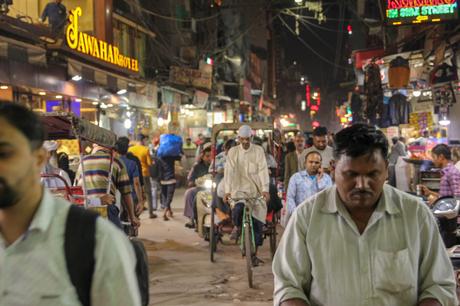
For a dose of history, visit Qutub Minar, the tallest brick minaret in the world. Its intricate carvings and impressive height make it unforgettable.
Winter (October to March) is the best time to visit Delhi, with cooler temperatures. Pack comfy shoes – there’s a lot to see and do.
2. Jaipur
Jaipur, Rajasthan’s capital, is known as the “Pink City” for its distinct terracotta architecture.
Start at Amer Fort, perched on a hill with sweeping views. Don’t miss Sheesh Mahal (Mirror Palace), a dazzling room of intricate mirror work.
Next up, City Palace. This blend of Mughal and Rajasthani architecture is packed with museums, courtyards, and the royal residence.
The iconic Hawa Mahal (Palace of Winds) is a five-story marvel with tiny windows once used by royal women to watch street life. It’s a Jaipur classic.
3. Agra
Agra is home to the Taj Mahal, one of the Seven Wonders of the World. This marble masterpiece, built by Emperor Shah Jahan for his wife Mumtaz Mahal, is a travel bucket-list icon.
Get there early to avoid the worst of the crowds and soak in the magical morning light. It’s a moment you won’t forget.
In my experience, some famous places don’t live up to the hype. The Taj Mahal is not one of those places.
It’s enormous, and the intricacy and beauty of every square inch is simply mind-blowing.
When I visited the Taj Mahal, I spent my whole time there totally in awe. I just couldn’t get over how much skill, care, and attention must’ve gone into creating this wonder.
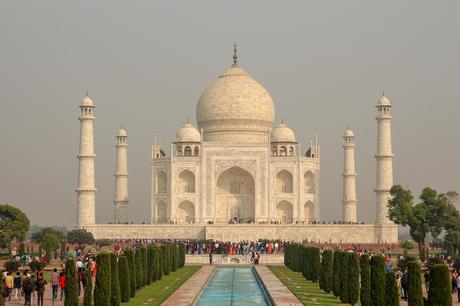
Nearby, the massive Agra Fort, another UNESCO site, offers stunning views of the Taj Mahal. Explore its grand palaces and courtyards for a slice of India’s royal history.
For a quieter vibe, visit Mehtab Bagh, a garden across the Yamuna River. It’s the perfect spot for a sunset view of the Taj Mahal.
Pre-book your Taj Mahal tickets to skip the queues.
4. Rajasthan’s Thar Desert (Jaisalmer)
Jaisalmer, the “Golden City,” lies in Rajasthan’s Thar Desert. Its sandstone architecture and sweeping desert landscapes create a setting that feels straight out of a fairy tale.
The centerpiece is Jaisalmer Fort, one of the world’s largest living forts. Wander through its temples, shops, and hotels for a glimpse into medieval life. Don’t miss the Jain temples with their intricate carvings.
A camel safari in the Thar Desert is a must. Ride through golden sand dunes at sunrise or sunset for jaw-dropping views. Sam Sand Dunes is the top spot for these adventures.
5. Varanasi
Varanasi, one of the world’s oldest cities, is a spiritual hotspot that brings you face-to-face with India’s cultural roots.
Perched on the banks of the sacred Ganges River, it’s a place where rituals and life intertwine.
Take a sunrise (or a sunset) boat ride on the Ganges. Watching morning prayers on the ghats is a serene, unforgettable experience.
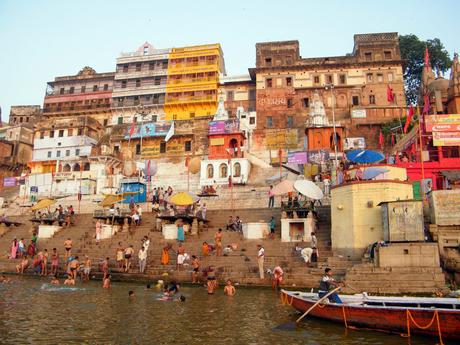
The evening Ganga Aarti at Dashashwamedh Ghat is another highlight. The chanting, music, and glowing lights create a mesmerizing atmosphere.
Don’t miss Kashi Vishwanath Temple, dedicated to Lord Shiva. It’s a spiritual hub and one of India’s most famous Hindu temples.
One of my favourite things to do in Varanasi is to wander and get lost in the maze of alleyways and backstreets of the old city. Atmospheric doesn’t even begin to describe this place – it’s incredible.
6. Rishikesh
Rishikesh, nestled in the Himalayan foothills, is a haven for yoga enthusiasts and adventure seekers. Known as the “Yoga Capital of the World,” it’s a mix of tranquility and adrenaline.
Catch the Ganga Aarti at Triveni Ghat, a nightly ceremony of lights and prayers by the Ganges. It’s a moving experience.
Thrill-seekers should try river rafting on the Ganges. The rapids and Himalayan views make it unforgettable.
For yoga lovers, the town offers ashrams and retreats for all levels. The best times to visit are March to June for rafting and September to November for yoga.
7. Kerala Backwaters (Alleppey)
Kerala’s backwaters, a maze of canals, lagoons, and rivers, are a slice of paradise. Alleppey, or Alappuzha, is the best place to experience them.
A houseboat cruise is the ultimate way to explore the backwaters. These floating hotels glide past rice fields, coconut groves, and quaint villages, offering a serene escape.
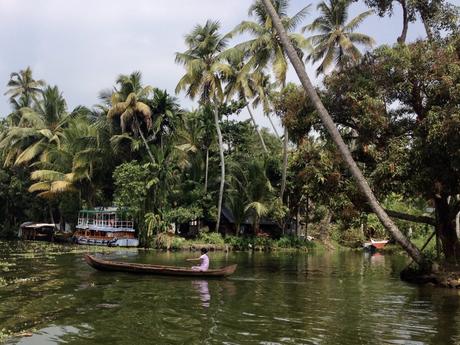
I loved visiting Kumarakom Bird Sanctuary. Home to countless species of migratory birds, you can take a peaceful ride in a traditional wooden canoe to get up close to nature.
Visit during winter (October to February) for mild weather. Choose a houseboat with full amenities to soak up Kerala’s beauty in style.
8. Goa
Goa is India’s ultimate beach destination. Think golden sands, great nightlife, and a touch of Portuguese charm.
Anjuna Beach is great for markets and partying, while Palolem Beach offers a quieter, more serene vibe.
Explore Goa’s heritage at the Basilica of Bom Jesus in Old Goa, a stunning site housing St. Francis Xavier’s remains.
Visit during winter (November to February) for the best weather, but expect crowds.
For a more peaceful trip, the monsoon season (June to September) has its own charm, although expect heavy rain most days.
9. Darjeeling
Darjeeling, the “Queen of the Hills,” is famous for its tea gardens, colonial charm, and breathtaking views of the Himalayas.
I spent a week here on my way up to Sikkim (see below). I absolutely loved the town’s peaceful, old-fashioned atmosphere, and the incredible mountain views.
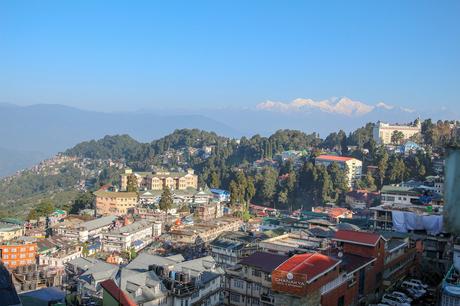
Head to Tiger Hill for sunrise. It’s popular and a little crowded, but watching the sun rise over Kanchenjunga and (in the far distance) Mount Everest is a sight to behold.
The soft golden light paints the snow-clad peaks vivid shades of orange and pink. It’s incredible.
I loved this experience, despite the early start and needing to stand, shivering, in the cold and dark pre-dawn.
The Darjeeling Himalayan Railway offers a nostalgic journey through tea plantations and misty hills. It’s a unique way to soak in the region’s charm.
Visit in spring or autumn for the best weather and clear skies. Don’t miss sampling Darjeeling’s world-renowned tea amidst its scenic estates.
10. Amritsar
Amritsar, in Punjab, is a city of devotion and history. It’s home to the Golden Temple, Sikhism’s holiest site.
The Golden Temple, or Harmandir Sahib, is breathtaking, especially at night when it’s illuminated and reflects in the surrounding pool. Participate in the rituals or simply soak up the peace.
The Wagah Border ceremony, a daily flag-lowering event between India and Pakistan, is full of energy and patriotism.
Visit during winter for pleasant weather. Arrive early at the Golden Temple to enjoy its serenity before the crowds descend.
11. Sikkim
Sikkim, a Himalayan gem, is a blend of stunning natural beauty and deep spiritual roots.
Known for its monasteries, mountain views, and distinctive Tibetan culture, it’s a perfect destination for anyone seeking adventure and tranquillity in equal measures.
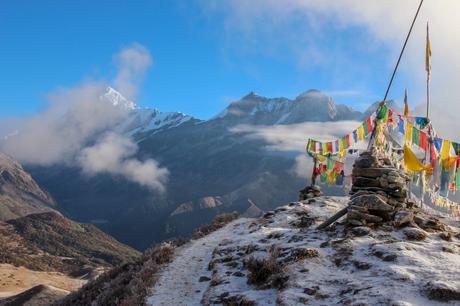
Tsomgo Lake is a serene high-altitude lake surrounded by snow-capped peaks.
Rumtek Monastery, one of Tibetan Buddhism’s most significant sites, offers peace and panoramic mountain views.
Gangtok, the state capital, is another highlight with its markets, monasteries, and lively vibe.
Sikkim is an amazing place for trekking, too, for those in the know. I spent a week doing the Goecha La trek in Kangchenjunga National Park.
It’s just as spectacular as the more well-known treks in Nepal, but with only a tiny fraction of the visitors.
Pack warm clothes for higher altitudes, even in summer.
12. Hampi
Hampi is an ancient city in Karnataka surrounded by scenic rocky landscapes. Once the Vijayanagara Empire’s capital, its ruins are a window into a glorious past.
The Virupaksha Temple, dedicated to Lord Shiva, is one of India’s oldest functioning temples. Its detailed carvings and towering gateways are awe-inspiring.
The Vithala Temple, famous for its stone chariot, is another highlight. The vast temple complex feels like stepping back in time.
A guide can help you uncover the rich history behind Hampi’s ruins.
13. Udaipur
Udaipur, often called the “City of Lakes,” is one of India’s most romantic destinations.
Known for its tranquil lakes, magnificent palaces, and rich cultural history, it’s a place that combines royal charm with breathtaking landscapes.
The City Palace is Udaipur’s crown jewel. This sprawling complex, overlooking Lake Pichola, is a marvel of intricate architecture and fascinating history.
Don’t miss Jag Mandir, a palace on an island in the lake that’s accessible by boat.
A boat ride on Lake Pichola is a must. The serene waters offer stunning views of the City Palace, Jag Mandir, and the surrounding Aravalli Hills, especially during sunset when everything is bathed in golden light.
14. Leh-Ladakh
Leh-Ladakh, in northernmost India, is a paradise for adventure seekers and nature lovers.
With its dramatic landscapes, ancient monasteries, and crystal-clear lakes, it’s one of the most remote and awe-inspiring regions in the country.
Pangong Lake is a showstopper. Its shifting shades of blue, set against stark mountains, are surreal and magical.
The Nubra Valley, with its sand dunes and double-humped camels, offers an extraordinary desert-like landscape amidst snow-capped peaks. Camel safaris here are unforgettable.
Summer (June to September) is the best time to visit, as the roads are open and the weather is perfect for exploring. Even in summer, pack warm layers for chilly nights.
15. Mysore
Mysore, Karnataka’s cultural capital, is steeped in royal heritage and vibrant traditions. It’s a city of grand palaces, lively markets, and countless historic sites.
The Mysore Palace is the city’s crown jewel. Its intricate design and opulent interiors are mesmerizing, especially during the Dussehra festival when it’s lit up with thousands of lights.
Chamundi Hill is another highlight. The climb up its 1,000 steps to Chamundeshwari Temple rewards you with sweeping views of the city and a sense of spiritual serenity.
Visit in October to witness the grandeur of Dussehra or during spring and autumn for comfortable weather and fewer crowds. Mysore’s timeless charm will leave you captivated.
16. Khajuraho
Khajuraho, in Madhya Pradesh, is synonymous with exquisite temples and intricate sculptures.
The Western Group of Temples, particularly the Kandariya Mahadev Temple, showcases extraordinary craftsmanship.
The temple walls, adorned with sculptures depicting life, divinity, and passion, are a visual treat.
Nearby, Raneh Falls and Panna National Park provide a refreshing natural escape. The park is home to diverse wildlife and offers a tranquil setting for walks and wildlife spotting.
Hiring a guide can enhance your understanding of the symbolism and stories behind the temple art.
17. Andaman Islands
The Andaman Islands, a tropical paradise in the Bay of Bengal, are known for their pristine beaches, coral reefs, and clear turquoise waters.
Radhanagar Beach on Havelock Island is a must-visit. Its powdery white sands and crystal-clear waters make it one of Asia’s most beautiful beaches.
Snorkelling and diving around Havelock’s coral reefs reveal a mesmerizing underwater world.
The Cellular Jail in Port Blair is a poignant reminder of India’s colonial past. Its museum offers insight into the struggles of India’s freedom fighters.
Visit between November and March for ideal weather and water activities. Book activities in advance to make the most of your time in this island paradise.
18. Ajanta and Ellora Caves
The Ajanta and Ellora Caves in Maharashtra are a testament to India’s ancient artistry and architectural ingenuity.
Ajanta’s Buddhist caves, adorned with murals and sculptures from the 2nd century BCE, offer a serene escape into India’s spiritual heritage.
Ellora’s temples, including the awe-inspiring Kailasa Temple carved from a single rock, showcase Hindu, Buddhist, and Jain influences. The craftsmanship here is unparalleled.
19. Ranthambore National Park
Ranthambore National Park in Rajasthan is one of India’s premier wildlife reserves, especially known for its tiger sightings.
A safari here offers the chance to spot Bengal tigers, leopards, and an array of other wildlife in their natural habitat. The park’s diverse landscape is stunning and perfect for photography.
Ranthambore Fort, nestled within the park, adds a historical touch to your visit. Its ancient ruins and temples are also definitely worth exploring.
Plan your trip between October and April for the best chances of tiger sightings. Book safaris early to secure a spot during the busy season.
20. Manali
Tucked away in the Himalayas, Manali is an all-time favourite for its scenic beauty and adventure sports.
Whether you’re up for adrenaline-pumping activities or a laid-back retreat, Manali delivers.
Solang Valley is the adventure hub, offering skiing, paragliding, and zorbing, depending on the season.
For a more relaxed experience, visit Vashisht Hot Springs to unwind with stunning mountain views.
Rohtang Pass, accessible in summer, offers jaw-dropping views of snow-capped peaks. It’s also the gateway to the remote and beautiful Lahaul-Spiti valleys.
Visit in summer (May to June) for outdoor activities or winter (November to February) for snow sports.
Book your stay early, especially during peak season, to enjoy Manali’s wonders hassle-free.
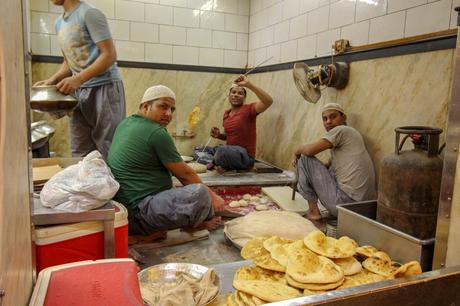
FAQs
When is the best time to visit India?
The best time to visit most of India is generally during the winter months (October to March), when the weather is cooler and more comfortable for sightseeing and outdoor activities. Avoid the hot summer months (April to June) and the monsoon season (June to September) for a more pleasant experience.
Do I need a visa to visit India?
Most travellers require a visa to visit India, but many nationalities are eligible for an e-Visa. Be sure to check the visa requirements for your country before planning your trip, as the process and eligibility can vary depending on your nationality.
Is India safe for solo travellers?
India is generally pretty safe for solo travellers, but it’s important to stay vigilant, especially in crowded areas. Stick to well-travelled routes, avoid isolated places at night, and follow local advice to ensure a safe and enjoyable trip.
What’s the best way to travel around India?
India has a vast train network and reasonably priced domestic flights for long-distance travel. For more flexibility, hiring a car with a driver is a popular option, especially for exploring regions that may not be easily accessible by public transport.
What currency is used in India?
India uses the Indian Rupee (INR) as its currency. ATMs are widely available in cities, but it’s advisable to carry some cash, especially in smaller towns or rural areas where card payments aren’t always accepted.
Final Thoughts
No matter where you go, India will leave you with unforgettable memories.
Whether exploring the grandeur of the Taj Mahal, the spiritual heart of Varanasi, or the peaceful backwaters of Kerala, India’s diverse landscapes and cultural richness means there’s always something new to discover.
Check out some of my other posts on India and let me help you plan an unforgettable trip!

